In this tutorial, we offer a few tips on how you can use SISTRIX to check how natural a link profile is. Natural profiles are very important when it comes to a sustainable presence on Google. With the aid of different updates, Google is getting better and better at automatically assessing the quality of pages.
Analysing a link profile step by step
We start out by typing the domain which we want to evaluate into the SISTRIX search bar. For example, the domain visitbritain.com.

In the next step, we switch to the link module through the left-hand navigation and click on Overview. For clear analyses, all figures in the Toolbox are important.
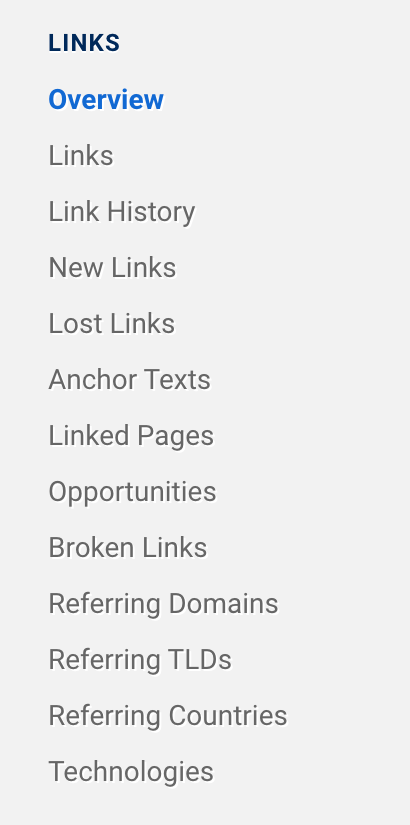
For all link data, additional key figures can be displayed and evaluated in SISTRIX. You can, for example, access the ratio of follow and nofollow links as well as start and subpage links. Furthermore, you get an overview of the distribution of Visibility values of your link sources. The anchor texts and link destinations are also extremely important for the evaluation of a natural link profile.
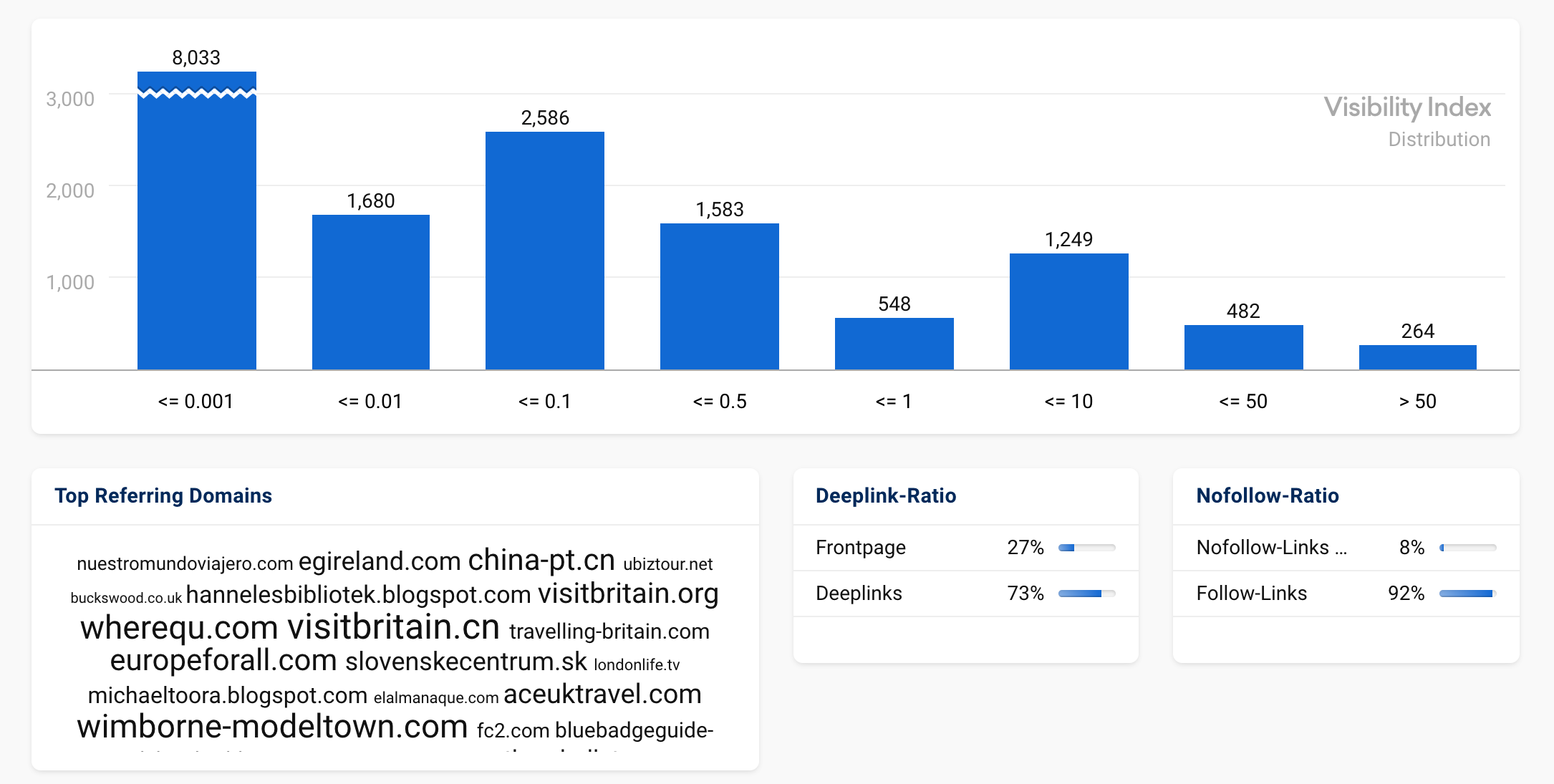
Distribution of anchor texts
Further down on the page, you can find the top anchor texts of a domain. A natural link profile mostly has its own name and domain as anchor texts. You should not set an exact percentage value, but these anchor texts should make up the majority. Let’s take a look at the most frequent anchor texts for visitbritain.com:
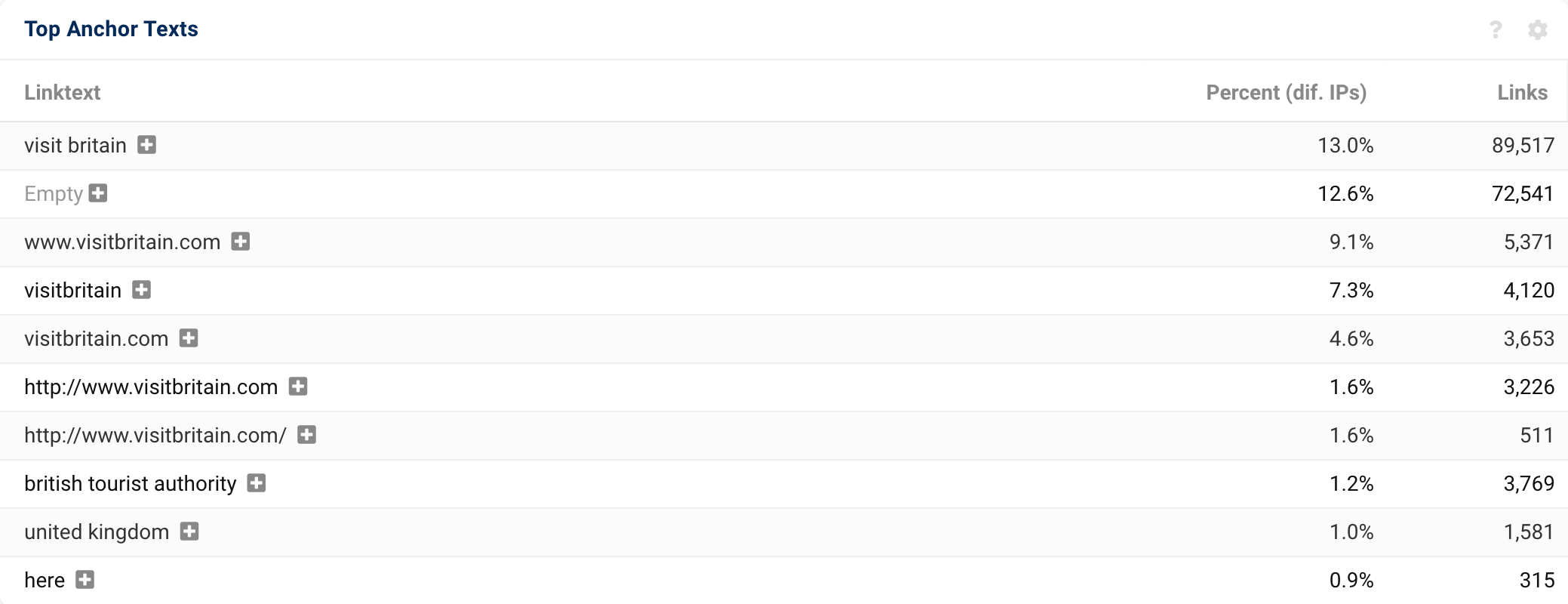
It quickly becomes clear that many anchor texts correspond to the domain (e.g., visitbritain.com) and the remaining top anchor texts mention the country directly.
Except for the anchor text “british tourist authority”, no other anchor text indicates an area of interest, a specific topic or other terms. Anchor texts that point to an area of interest include terms that mention special sights, buildings and cultural places.
“Empty” includes all links that don’t have an anchor text or where other HTML elements are located within the <a> element, such as images.
SISTRIX does not categorise the anchor texts any further, as the allocation of terms to categories such as “area of interest” is very subjective. Everyone can assess differently whether a keyword points to an interest.
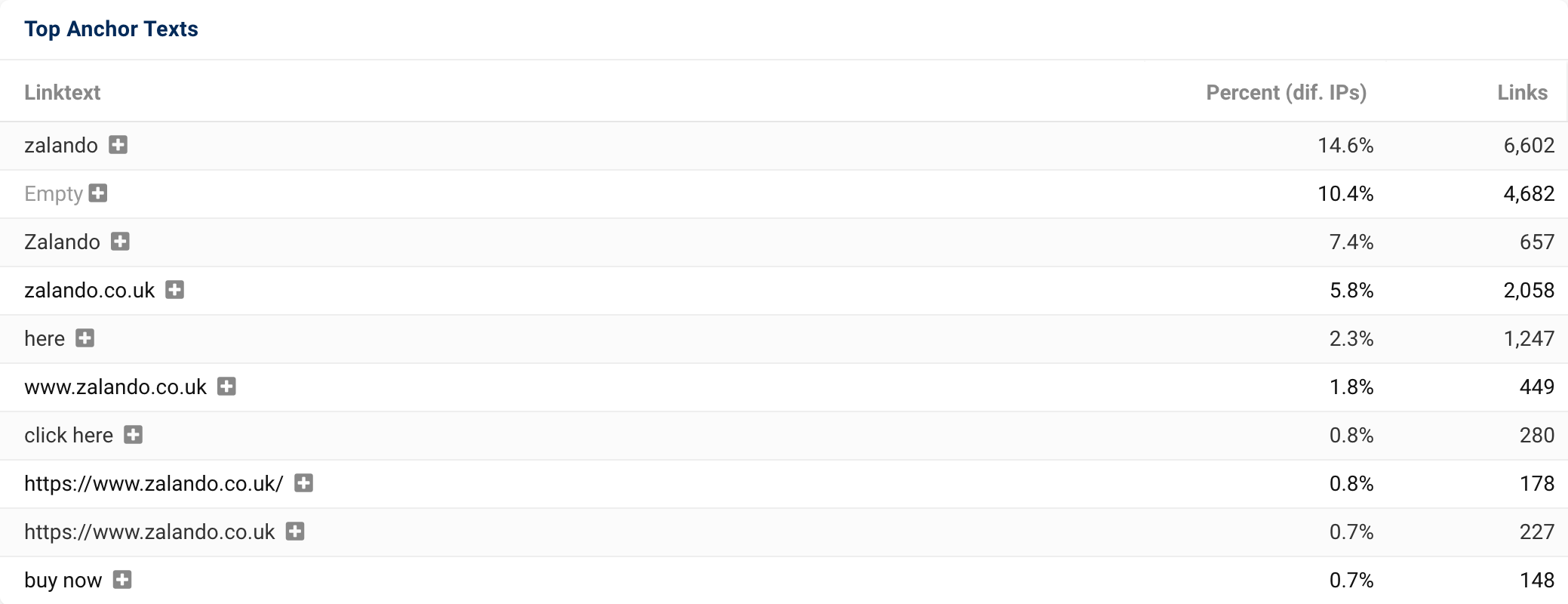
However, if you take a look at the distribution of the anchor texts of a domain, you should have the feeling that the majority of the anchor texts contain the domain name. This suggests a natural link profile. This is not only true for country tourism websites such as visitbritain.com, but also for large online shops such as zalando.co.uk (pictured above), where more than 30 percent of the anchor texts refer to the own name and domain.
As already mentioned, only the top anchor texts are shown here. In the navigation on the left-hand side, you will find the menu item “Anchor Texts”. There you can view all available anchor texts in detail. If you click on the [+] behind an anchor text, all corresponding backlinks will be displayed.
Deeplink- & Nofollow-Ratio
Every link profile usually consists of start page links and links that lead to subpages. The same applies for nofollow and follow links. Basically, there is no naturally grown page that does not have at least one nofollow link.
Explanation: Nofollow links are not followed by the Googlebot. As a result, these links do not pass on PageRank or any other signals that contribute to search engine rankings. Nevertheless, Google is able to know how many and what kind of nofollow links a website receives.
Typical links like these are those from blog comments (WordPress sets comment links to nofollow by default) and from forum posts. Some forums will mark external links in threads as nofollow.
You can find more information on nofollow in our Ask-SISTRIX Knowledgebase.
Below, we will show you a typical comparison for a positive and a negative distribution in the link profile:
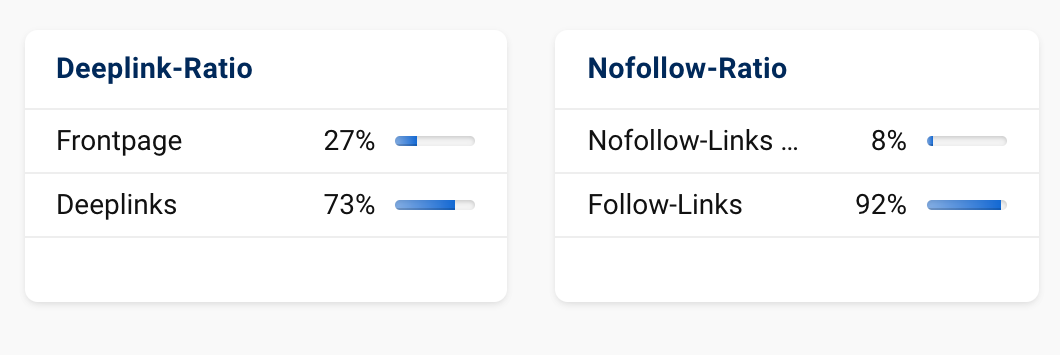
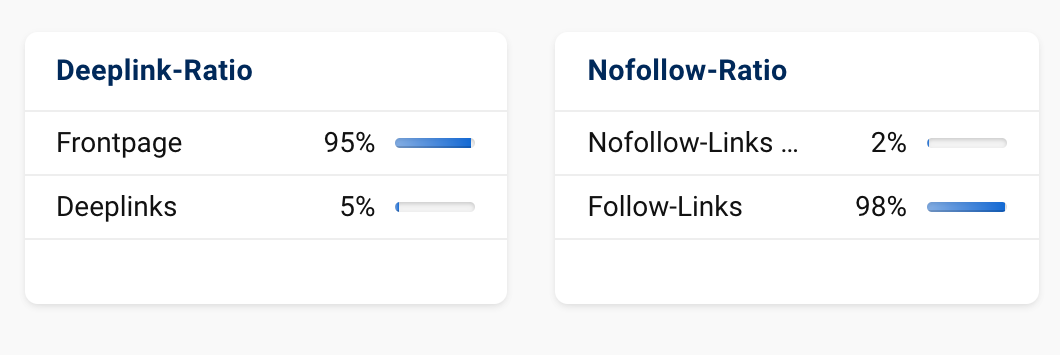
The unnatural link profile almost exclusively has links to the start page. Subpages are hardly linked, although they exist. These distributions are often caused by overly motivated link building actions combined with a lack of understanding for sustainability. The nofollow ratio, with only 2% percent nofollow links, also shows a borderline value.
On the other hand, the ratio for visitbritain.com (pictured above that) can be assessed positively. Start and subpages are linked about 1:2 and the nofollow attribute is also used to a natural extent.
Here, too, it should be noted that there is no universal ideal ratio of link types. Depending on the type of website, there can be significant differences. Online shops, for example, usually have quite a lot of links to subpages.
Customers who have bought products or potential buyers like to ask for other people’s opinions on products, especially on social media. In doing so, the product is often mentioned as a deeplink. Links to subpages of shops are often generated this way. It is the same or similar with city and news pages.
Theguardian.com, for example, has 99 percent of links to subpages and only 0.8 percent to the start page. This can be explained by the fact that people are least interested in the start page of a news site. Online shops usually fluctuate somewhere between 40 and 65 percent of subpage links.
Summary
Natural link profiles consist mostly of links to one’s own brand and domain. Additional anchor texts are composed of words like “here” and there are, of course, also always some terms that are supposed to push specific services or products in the Google rankings. These would be money keywords, like “book a hotel in London”, for example.
You should keep an eye on the distribution of start page to subpage links as well as the nofollow ratio, at the very least. It also makes sense to analyse your direct competition, so you can come up with an average which you can then adhere to for your own website.
It is not condemnable to want to be in first place for certain search terms on Google. But the way one approaches this goal is crucial in times of massive Google Updates. If your website has natural values, then you are set for success that is sustainable.